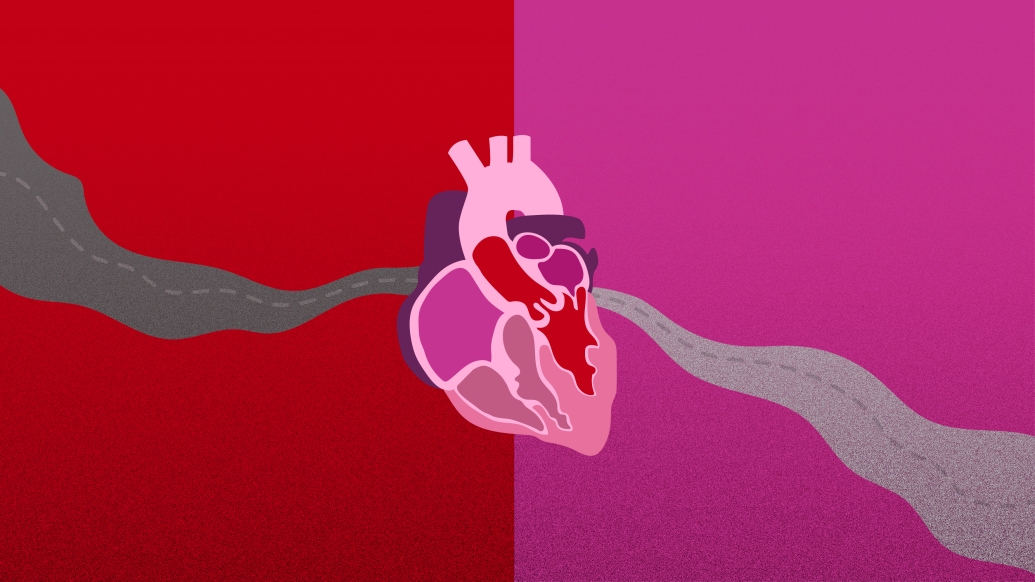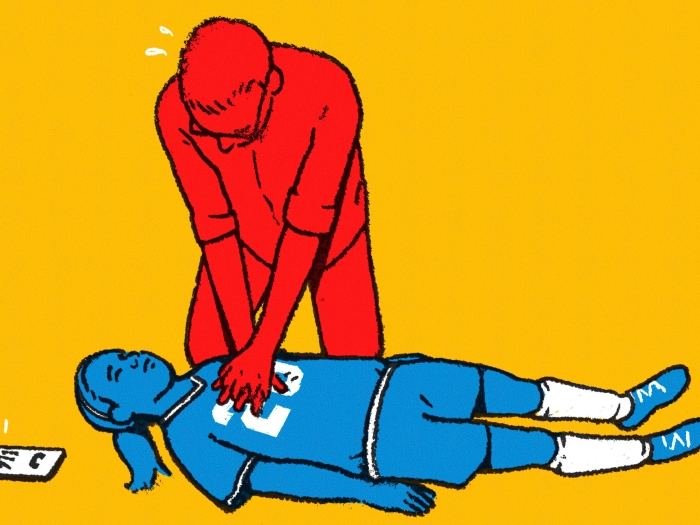A Michigan Medicine cardiac surgeon explains treatment for aortic stenosis patients while stressing the importance of shared decision-making.
7:00 AM
Author |

More than a million people in the United States have aortic stenosis, a condition in which the aortic valve doesn't open fully because of a thickening of the valve leaflets.
MORE FROM MICHIGAN: Sign up for our weekly newsletter
As a result, blood isn't adequately pumped, and pressure increases in the left ventricle, the main pumping chamber of the heart. The heart compensates by thickening its walls in order to maintain adequate pumping pressure. Without proper treatment, heart function can deteriorate.
An early symptom of aortic stenosis is shortness of breath associated with activity. Advanced symptoms include fainting, chest pain and heart failure.
While some patients with aortic stenosis are treated with medication, about 300,000 people in the U.S. each year are diagnosed with severe aortic stenosis. This often requires more extensive treatment — for which there are a variety of options.
The difference between TAVR and SAVR
For patients with severe aortic stenosis, treatment options may include surgical aortic valve replacement (SAVR) or transcatheter aortic valve replacement (TAVR).
When it comes to picking the best one, Michigan Medicine cardiac surgeon G. Michael Deeb, M.D., says patients should be actively involved. "This is what we call shared decision-making," he says. "We are treating a disease process that includes the full range of aortic stenosis, and there are a variety of treatment options."
SEE ALSO: 5 Years Later, 'Life is Good' for One of Michigan's First TAVR Patients
During an open-heart SAVR procedure, an incision is made in the chest to access the heart. The diseased aortic valve is then removed and replaced with a new valve. For years, SAVR was the standard treatment for severe aortic stenosis patients.
TAVR, a minimally invasive, catheter-based procedure, is now the first-line therapy for severe aortic stenosis patients who cannot withstand an open-heart procedure. In fact, many of these patients had no hope of survival until the introduction of TAVR.
But, while TAVR seems like the obvious choice to avoid the stress of an open procedure, not everyone is a candidate for it, says Deeb. "A potential TAVR candidate must have severe aortic stenosis and a three-leaflet valve versus a two-leaflet valve (bicuspid aortic valve)."
Patients with endocarditis (infection of the heart) or associated aneurysms are also not candidates.
TAVR is not yet approved for low-risk patients but is currently in clinical trial. "Most patients who need an aortic valve replacement are in the low-risk group," says Deeb. "Some patients come to U-M because we are one of only four institutions in the state to offer the low-risk trial."
Reviewing the risks and benefits of TAVR and SAVR
Deeb and his team also look to Society of Thoracic Surgeons data, which provide a patient risk of mortality score. "We then add other factors to weigh the risk and make a final assignment of risk: extreme, high to moderate, low or no risk."
SEE ALSO: Is TAVR Right for You? More Aortic Stenosis Patients Now Eligible
Those in the extreme to high-risk category are the likely candidates for TAVR. Those in the low-risk group are considered for the clinical trial. Patient anatomy is also examined to determine if it is consistent with TAVR. "Some patient valves are either too small or too large," Deeb says, adding that approximately 93 percent of patients have the right anatomy.
"We discuss all the relevant information with the patient, including risk of complications, healing issues, trauma to the body and long-term outcomes, including which valve will be best for the patient in five to 15 years," says Deeb.
Both types of valves are tissue valves, but the SAVR valve is a fixed stent with an approximate life span of 15 years, while the TAVR valve, which expands and contracts, has an uncertain life span.
"We don't currently know which has the longest durability, especially in younger patients," says Deeb. "For example, a 50- to 60-year-old patient might qualify for a TAVR procedure, but we don't know what the durability of the valve is, so SAVR must be considered."
This is where shared decision-making comes into play, says Deeb, noting that decisions are based on individual patients. If all risks and benefits are weighed and the patient is a candidate for TAVR, this is likely the best option, he says, noting: "The surgery is so much less invasive, recovery is shorter and the patient is back in society faster."
Looking to the future
Deeb believes that in 10 years, these decisions may not be necessary. "We'll have a TAVR valve for patients with aortic insufficiency as well as those with a bicuspid valve. For patients with an aneurysm in the aorta, we might have TAVR endovascular stenting."
In 20 years, Deeb predicts the majority of aortic disease patients will be treated with TAVR. "TAVR patients do so incredibly well. They are walking around right after the procedure and discharged in three days. It's a wonderful option for patients."
Find out more about TAVR at Michigan Medicine.

Explore a variety of healthcare news & stories by visiting the Health Lab home page for more articles.

Department of Communication at Michigan Medicine
Want top health & research news weekly? Sign up for Health Lab’s newsletters today!





